| Krishna | |
|---|---|
| God of Compassion, Tenderness and Love | |
 Krishna statue at the Sri Mariamman Temple, Singapore | |
| Affiliation | Svayam Bhagavan, Paramatman, Brahman, Vishnu, Radha Krishna |
| Abode | Goloka Vrindavana, Gokula, Dwarka |
| Weapon |
Sudarshana Chakra Kaumodaki |
| Battles | Kurukshetra War |
| Texts | Bhagavata Purana, Harivamsa, Vishnu Purana, Mahabharata (Bhagavad Gita), Gita Govinda |
| Festivals | Krishna Janmashtami, Holi |
| Personal information | |
| Born | Mathura, Kingdom of Surasena (present-day Uttar Pradesh, India) |
| Consorts | Radha; Rukmini, Satyabhama and other Ashtabharyas, and 16,000–16,100 other junior queens |
| Parents | Devaki (mother) and Vasudeva (father), Yashoda (foster mother) and Nanda Baba (foster father) |
| Siblings | Balarama, Subhadra |
| Dynasty | Somavansha (Yaduvanshi) |
Krishna (/?kr??n?/, (![]() listen); Sanskrit: ?????, translit. K???a) is a major deity in Hinduism. He is worshiped as the eighth avatar of the god Vishnu and also as the supreme God in his own right. He is the god of compassion, tenderness, and love in Hinduism, and is one of the most popular and widely revered among Indian divinities. Krishna's birthday is celebrated every year by Hindus on Janmashtami according to the lunisolar Hindu calendar, which falls in late August or early September of the Gregorian calendar.
listen); Sanskrit: ?????, translit. K???a) is a major deity in Hinduism. He is worshiped as the eighth avatar of the god Vishnu and also as the supreme God in his own right. He is the god of compassion, tenderness, and love in Hinduism, and is one of the most popular and widely revered among Indian divinities. Krishna's birthday is celebrated every year by Hindus on Janmashtami according to the lunisolar Hindu calendar, which falls in late August or early September of the Gregorian calendar.
The anecdotes and narratives of Krishna's life are generally titled as Krishna Leela. He is a central character in the Mahabharata, the Bhagavata Purana and the Bhagavad Gita, and is mentioned in many Hindu philosophical, theological, and mythological texts. They portray him in various perspectives: a god-child, a prankster, a model lover, a divine hero, and as the universal supreme being. His iconography reflects these legends, and shows him in different stages of his life, such as an infant eating butter, a young boy playing a flute, a young man with Radha or surrounded by women devotees, or a friendly charioteer giving counsel to Arjuna.
The synonyms of Krishna have been traced to 1st millennium BCE literature. In some sub-traditions, Krishna is worshipped as Svayam Bhagavan, and this is sometimes referred to as Krishnaism. These sub-traditions arose in the context of the medieval era Bhakti movement. Krishna-related literature has inspired numerous performance arts such as Bharatnatyam, Kathakali, Kuchipudi, Odissi, and Manipuri dance. He is a pan-Hindu god, but is particularly revered in some locations such as Vrindavan in Uttar Pradesh, in the Jagannatha aspect in Odisha, Mayapur in West Bengal, Dwarka and Junagadh in Gujarat, in the form of Vithoba in Pandharpur, Maharashtra, Udupi in Karnataka, Nathdwara in Rajasthan and Guruvayur in Kerala. Since the 1960s the worship of Krishna has also spread to the Western world and to Africa, largely due to the work of the International Society for Krishna Consciousness (ISKCON).
Contents
Names and epithets
The name "Krishna" originates from the Sanskrit word K???a, which is primarily an adjective meaning "black", "dark", or "dark blue". The waning moon is called Krishna Paksha, relating to the adjective meaning "darkening". The name is also interpreted sometimes as "all-attractive".
As a name of Vishnu, Krishna is listed as the 57th name in the Vishnu Sahasranama. Based on his name, Krishna is often depicted in idols as black- or blue-skinned. Krishna is also known by various other names, epithets, and titles that reflect his many associations and attributes. Among the most common names are Mohan "enchanter"; Govinda "chief herdsman", and Gopala "Protector of the 'Go', which means "Soul" or the cows". Some names for Krishna hold regional importance; Jagannatha, found in Puri Hindu temple, is a popular incarnation in Odisha state and nearby regions of eastern India.
Iconography
Krishna is represented in the Indian traditions in many ways, but with some common features. His iconography typically depicts him with black, dark, or blue skin, like Vishnu. However, ancient and medieval reliefs and stone-based arts depict him in the natural color of the material out of which he is formed, both in India and in southeast Asia. In some texts, his skin is poetically described as the color of Jambul (Jamun, a purple-colored fruit).
Krishna is often depicted wearing a peacock-feather wreath or crown, and playing the bansuri (Indian flute). In this form, he is usually shown standing with one leg bent in front of the other in the Tribhanga posture. He is sometimes accompanied by cows or a calf, which symbolise the divine herdsman Govinda. Alternatively, he is shown as a romantic and seductive man with the gopis (milkmaids), often making music or playing pranks.
In other icons, he is a part of battlefield scenes of the epic Mahabharata. He is shown as a charioteer, notably when he is addressing the Pandava prince Arjuna character, symbolically reflecting the events that led to the Bhagavad Gita – a scripture of Hinduism. In these popular depictions, Krishna appears in the front as the charioteer, either as a counsel listening to Arjuna, or as the driver of the chariot while Arjuna aims his arrows in the battlefield of Kurukshetra.
Alternate icons of Krishna show him as a baby (Bala Krishna, the child Krishna), a toddler crawling on his hands and knees, a dancing child, or an innocent-looking child playfully stealing or consuming butter (Makkan Chor), holding Laddu in his hand (Laddu Gopal) or as a cosmic infant sucking his toe while floating on a banyan leaf during the Pralaya (the cosmic dissolution) observed by sage Markandeya. Regional variations in the iconography of Krishna are seen in his different forms, such as Jaganatha in Odisha, Vithoba in Maharashtra, Shrinathji in Rajasthan and Guruvayoorappan in Kerala
Guidelines for the preparation of Krishna icons in design and architecture are described in medieval-era Sanskrit texts on Hindu temple arts such as Vaikhanasa agama, Vishnu dharmottara, Brihat samhita, and Agni Purana. Similarly, early medieval-era Tamil texts also contain guidelines for sculpting Krishna and Rukmini. Several statues made according to these guidelines are in the collections of the Government Museum, Chennai.
Historical and literary sources
The earliest text containing detailed descriptions of Krishna as a personality is the epic Mahabharata, which depicts Krishna as an incarnation of Vishnu. Krishna is central to many of the main stories of the epic. The eighteen chapters of the sixth book (Bhishma Parva) of the epic that constitute the Bhagavad Gita contain the advice of Krishna to Arjuna on the battlefield. The Harivamsa, a later appendix to the Mahabharata contains a detailed version of Krishna's childhood and youth.
The Chandogya Upanishad, estimated to have been composed sometime between the 8th and 6th centuries BCE, has been another source of speculation regarding Krishna in ancient India. Verse 3.17.6 mentions Krishna Devakiputra (Sanskrit: ??????? ???????????) as a student of the sage Ghora Angirasa. This phrase, which means "Krishna the son of Devaki", has been mentioned by scholars such as Max Müller as a potential source of fables and Vedic lore about Krishna in the Mahabharata and other ancient literature – only potential, because this verse could have been interpolated into the text, or the Krishna Devakiputra, could be different from the deity Krishna. These doubts are supported by the fact that the much later age Sandilya Bhakti Sutras, a treatise on Krishna, cites later age compilations such as the Narayana Upanishad but never cites this verse of the Chandogya Upanishad. Other scholars disagree that the Krishna mentioned along with Devika in the ancient Upanishad is unrelated to the later Hindu god of the Bhagavad Gita fame. For example, Archer states that the coincidence of the two names appearing together in the same Upanishad verse cannot be dismissed easily.<
Watch movie Krishna online on Amazon
Watch movie Krishna online
Watch The Movie On PrimeMuskaan Full HD Movie Download
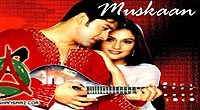
Mulzim Full HD Movie Download
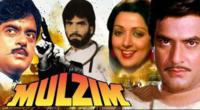
Dil Aur Mohabbat Full HD Movie Download
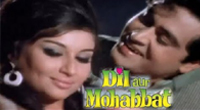
Raja Jani Full HD Movie Download
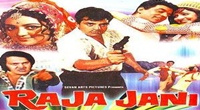
Is Raat Ki Subah Nahi Full HD Movie Download
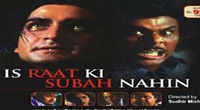
Chunauti Full HD Movie Download
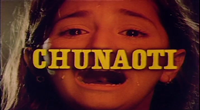
Hathkadi (1982) Full HD Movie Download
.jpg)
Farz Aur Kanoon (1982) Full HD Movie Download
.jpg)
Johny Ustad Full HD Movie Download

Aanari Dada Full HD Movie Download
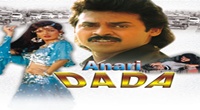
Penmani Aval Kanmani Full HD Movie Download
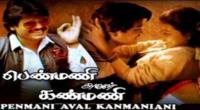
Sakhiya Full HD Movie Download
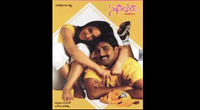
Amalapuram Alludu Full HD Movie Download
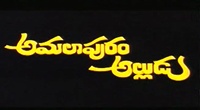
Assembly Rowdy Full HD Movie Download
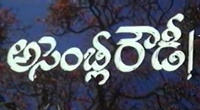
Devi Abhayam Full HD Movie Download
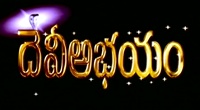
Khaidi Inspector Full HD Movie Download
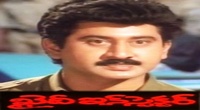
Phir Ek Tehelka Full HD Movie Download
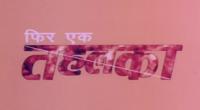
Harry Potter and the Half-Blood Prince Full HD Movie Download

Pranam Full HD Movie Download
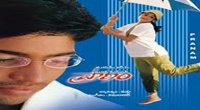
Killar Jhansi Full HD Movie Download
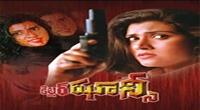
Subhodayam Full HD Movie Download
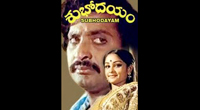
Download latest Movie from bollywood
- 1> baaghi 3
- 2> THE SKY IS PINK MOVIE FULL STORY AND REVIEW
- 3> Luka Chuppi
- 4> TO ALL THE BOYS I’VE LOVED BEFORE
- 5> Kabir Singh
- 6> Street Dancer 3D
- 7> Simmba
- 8> Gone Girl
- 9> The Girl Who Lived
- 10> Ludo
- 11> DILWALE DULHANIA LE JAYENGE
- 12> GUILTY
- 13> The Godfather
- 14> Adventures of Rusty
- 15> Sooryavanshi
- 16> Satyameva Jayate 2
- 17> Thappad
- 18> Bhool Bhulaiyaa 2
- 19> KGFChapter 2
- 20> Mardaani 2
- 21> Pinjar
- 22> Shivaji maharaj
- 23> Ek Villian 2
- 24> Hungama 2
- 25> Divergent
- 26> Mumbai Saga
- 27> The Internship
- 28> HIT (telugu)
- 29> Panga
- 30> The perfect date
- 31> 16 December
- 32> Gopala Gopala (Telugu)
- 33> Brahmastra
- 34> Gangubai Kathiawadi
- 35> Manmadhudu
- 36> Nenu local
- 37> Mahanati
- 38> Shatamanam bavathi
- 39> Lagaan
- 40> After
- 41> MOM
- 42> Shamshera
- 43> Raguvaran BTech
- 44> Khakee
- 45> The villain
- 46> OM
- 47> Mr. perfect
- 48> Bueatifull mind
- 49> Hichki
- 50> Gabbar Singh
- 51> Jogi
- 52> Before Sunrise
- 53> Before Sunset
- 54> Before Midnight
- 55> The Big Bull
- 56> Top Gun: Maverick
- 57> The Purge
- 58> The Sky is Pink
- 59> Laxmmi Bomb
- 60> Sadak 2
- 61> Sufna
- 62> Prithviraj
- 63> PK
- 64> Coolie No 1(2020)
- 65> Black Widow
- 66> Dear Zindagi
- 67> Dil Bechara
- 68> PHIR HERA PHERI
- 69> WAR
- 70> Dostana
- 71> RRR: Roudram Ranam Rudhiram
- 72> Maidan
- 73> Dabbang 3
- 74> Chhalaang
- 75> life as we know it
- 76> SherShaah
- 77> Sandeep Aur Pinky Faraar
- 78> Event Horizon
- 79> 83
- 80> Radhe: Your Most Wanted Bhai
- 81> Gunjan Saxena: The Kargil Girl
- 82> Mr India
- 83> Vivah
- 84> Anokha Bandhan
- 85> Ghost
- 86> Bhoot: Part One - The Haunted Ship
- 87> Haseen Dilruba
- 88> Laal Singh Chaddha
- 89> Qismat
- 90> Rajput
- 91> Drive
- 92> Dil Chahta Hai
- 93> Dil Ki Baazi
- 94> Dil Ka Rishta
- 95> Teesri Manzil
- 96> Dil
- 97> Love Aaj Kal
- 98> Khaali Peeli
- 99> Bunty Aur Babli 2
- 100> Atrangi Re
- 101> Gulabo Sitabo
- 102> Jodi
- 103> Suraj Pe Mangal Bhari
- 104> Deewana
- 105> Attack
- 106> Sardar Udham Singh
- 107> Toofan
- 108> THE LOVEBIRDS
- 109> Jersey
- 110> Ginny Weds Sunny
- 111> Thalaivi
- 112> Shiddat
- 113> Angels vs Zombies
- 114> Koi Mil Gya
- 115> Thank God
- 116> Bhuj: The Pride of India
- 117> Hum Aapke Hain Kaun
- 118> The Platform
- 119> Bird Box
- 120> Roohi Afzana
- 121> Torbaaz
- 122> Nikamma
- 123> World War Z
- 124> Extraction
- 125> Train to Busan
- 126> Life of Pi
- 127> SHAADI MEIN JROOR AANA
- 128> Himmat Aur Mehnat
- 129> To All The Boys: P.S. I Still Love You
- 130> Mimi
- 131> Good Newwz
- 132> Shubh Mangal Zyada Saavdhan
- 133> Raabta
- 134> Harry Potter and the Philosopher's Stone
- 135> Harry Potter and the Chamber of Secrets
- 136> Chhapaak
- 137> War of the Worlds
- 138> Harry Potter and the Prisoner of Azkaban
- 139> Harry Potter and the Goblet of Fire
- 140> MURDER MYSTERY
- 141> Shakuntala Devi
- 142> Bachchan Pandey
- 143> Jayeshbhai Jordar
- 144> Sheer Qorma
- 145> Saina
- 146> 'O' Pushpa I hate tears
- 147> Kedarnath
- 148> MS Dhoni The Untold Story
- 149> Chhichhore
- 150> Badhaai Ho
- 151> Unstoppable
- 152> Oz the Great And Powerful
- 153> The Girl on the Train
- 154> Haathi Mere Saathi 2020
- 155> The Conjuring: The Devil Made Me Do It
- 156> Gandhi Se Pehle Gandhi
- 157> The Song of Scorpions
- 158> Srimanthudu
- 159> Hello Guru Prema Kosame
- 160> Beauty and The Beast
- 161> Black Panther
- 162> Charlie and the Chocolate Factory
- 163> Bole Chudiyan
- 164> Fidaa
- 165> Duvvada Jagannadham
- 166> Bruce Lee: The Fighter
- 167> Hyper
- 168> Yaara
- 169> Red (2020)
- 170> Shivam
- 171> That Is Mahalakshmi
- 172> Nishabdham
- 173> Aashram 2020 web series
- 174> Laxmii
- 175> Mismatched
- 176> STUDENT OF THE YEAR 2
- 177> NAIL POLISH
- 178> Ramprasad Ki Tehrvi
- 179> KAAGAZ
- 180> 12 o Clock
- 181> The Power
- 182> bolo hau
- 183> Tribhanga
- 184> JAMUN
- 185> Madam Chief Minister
- 186> Maasaab
- 187> Aadhaar
- 188> Tanhaji
- 189> Bhaagi 3
- 190> Bhootnath
- 191> MALANG
- 192> Jai Mummy Di
- 193> Haathi Mere Saathi 2021
- 194> Shakeela
- 195> Unpaused
- 196> Annayya
- 197> Vamsoddharakudu
- 198> Mrugaraju
- 199> Narasimha Naidu
- 200> Sankranti
- 201> Manasu Maata Vinadhu
- 202> Anjaane
- 203> Apaharan
- 204> Bachke Rehna Re Baba
- 205> Bewafaa
- 206> Roohi
- 207> Radhe
- 208> Zindagi Khoobsoorat Hai
- 209> Yeh Mohabbat Hai
- 210> Yeh Kya Ho Raha Hai?
- 211> The Tomorrow War
- 212> DehradunDiary
- 213> Meri Shaadi Karaoo
- 214> Matruu Ki Bijlee Ka Mandola
- 215> No One Killed Jesica
- 216> Aag Ka Goola
- 217> Eight Million Dollars
- 218> Three Hundred
- 219> Cats and Dog
- 220> Decoy
- 221> Gold Rush
- 222> You Have Got Mail
- 223> Final Destination three
- 224> Tofan
- 225> Jungle


